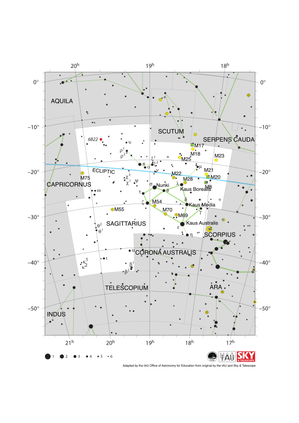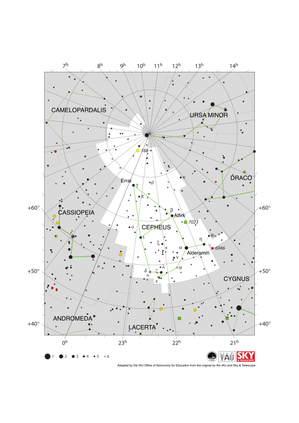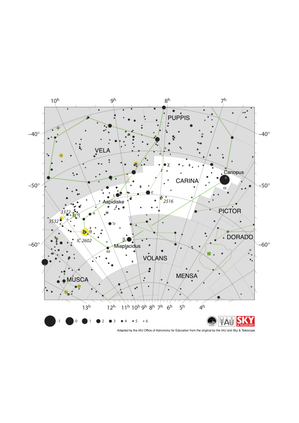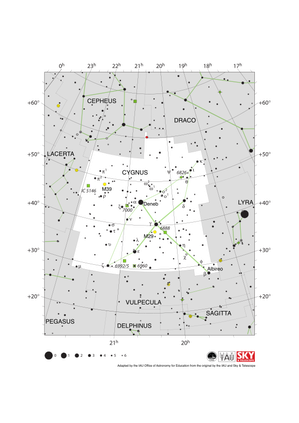Glossary term: Nebula
Description: A nebula is a distant celestial object that has the appearance of a cloud. Usually, a nebula consists of interstellar gas and dust. Historically, the term nebulae included any extended fuzzy-looking object, including what we today recognize as galaxies – distant star systems like our own Milky Way galaxy. Today, the term nebula is restricted to gas and dust clouds that are part of the interstellar medium – the gas and dust between stars within a galaxy. The category includes a number of different kinds of object: Molecular clouds are comparatively cold and dark, and predominantly consist of molecular hydrogen; inside clouds like this is where new stars are formed. Giant molecular clouds can contain up to a few millions of solar masses' worth of hydrogen gas. Young stars frequently emit narrow jets of ionized gas; when those jets excite the surrounding gas, the result is a type of nebula called a Herbig–Haro object. When massive stars have formed, their intense radiation makes the surrounding gas emit characteristic reddish light; the results are nebulae of hot and ionized hydrogen gas which are called HII regions. Other types of nebula are associated with the death of stars: low-mass stars leave behind expanding shells of gas that are (somewhat confusingly) called planetary nebulae. When a high-mass star explodes as a supernova, the ejected gas forms a type of nebula called a supernova remnant.
Related Terms:
See this term in other languages
Term and definition status: This term and its definition have been approved by a research astronomer and a teacher
The OAE Multilingual Glossary is a project of the IAU Office of Astronomy for Education (OAE) in collaboration with the IAU Office of Astronomy Outreach (OAO). The terms and definitions were chosen, written and reviewed by a collective effort from the OAE, the OAE Centers and Nodes, the OAE National Astronomy Education Coordinators (NAECs) and other volunteers. You can find a full list of credits here. All glossary terms and their definitions are released under a Creative Commons CC BY-4.0 license and should be credited to "IAU OAE".
If you notice a factual error in this glossary definition then please get in touch.
Related Diagrams
Sagittarius Constellation Map
Credit: Adapted by the IAU Office of Astronomy for Education from the original by IAU/Sky & Telescope
License: CC-BY-4.0 Creative Commons Attribution 4.0 International (CC BY 4.0) icons
Auriga Constellation Map
Credit: Adapted by the IAU Office of Astronomy for Education from the original by the IAU and Sky & Telescope
License: CC-BY-4.0 Creative Commons Attribution 4.0 International (CC BY 4.0) icons
Cepheus Constellation Map
Credit: Adapted by the IAU Office of Astronomy for Education from the original by the IAU and Sky & Telescope
License: CC-BY-4.0 Creative Commons Attribution 4.0 International (CC BY 4.0) icons
Carina Constellation Map
Credit: Adapted by the IAU Office of Astronomy for Education from the original by the IAU and Sky & Telescope
License: CC-BY-4.0 Creative Commons Attribution 4.0 International (CC BY 4.0) icons
Cygnus Constellation Map
Credit: Adapted by the IAU Office of Astronomy for Education from the original by the IAU and Sky & Telescope
License: CC-BY-4.0 Creative Commons Attribution 4.0 International (CC BY 4.0) icons
Related Activities
Reading the Rainbow
astroEDU educational activity (links to astroEDU website) Description: By understanding how rainbows work, you can discover about light and its properties, learning about stars, nebulae, galaxies, and our Universe.
License: CC-BY-4.0 Creative Commons Attribution 4.0 International (CC BY 4.0) icons
Age Ranges:
14-16
, 16-19
, 19+
Education Level:
Informal
, Middle School
, Secondary
, University
Areas of Learning:
Interactive Lecture
, Observation based
, Social Research
Costs:
Low Cost
Duration:
1 hour 30 mins
Group Size:
Group
Skills:
Analysing and interpreting data
, Asking questions
, Engaging in argument from evidence














